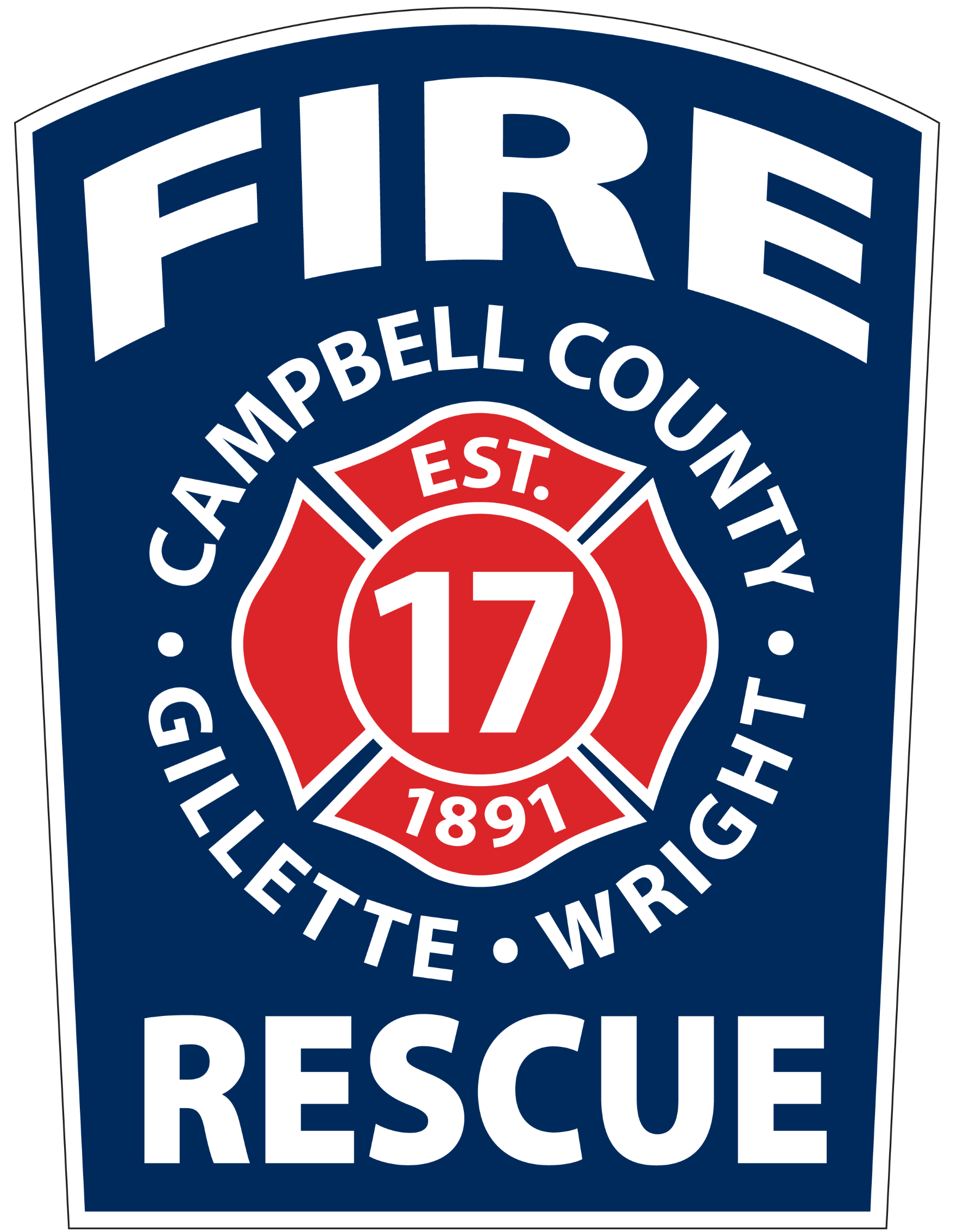In 1892, Gillette was officially founded as a small railroad community in Northeastern Wyoming. For the first few years of the community's existence, there would be little to no fire suppression efforts, although there were several major fires in the town. In 1904, James Morgan decided to donate a fire bell (currently on display at the Alan Mickelson Fire Training Center) to the town of Gillette to begin the organizational process of firefighting efforts. Under the bell tower was stored a "bucket brigade" cart. Once the bell rang, any civilians available would rush to the cart and proceed to suppress the fire.
In 1906, the City Marshal was given the position of Fire Marshal to officially start the Gillette Fire Department. After the first water system and fire hydrants were installed in 1908, the Gillette Fire Department was able to purchase a hose cart (which was parked in front of Morgan's Store) to significantly increase firefighting capabilities. In 1910, the Gillette Fire Department was able to purchase a traditional horse-drawn hook and ladder truck for $350.
As the community continued to grow through the early 1900s, the fire department's responsibilities began to increase. By 1925, the city department had acquired an old Model-T with a small tank on it; their first unit with a tank. The county fire district was battling wildland fires with wet gunny sacks and shovels. 1929 brought another new development; the Gillette Fire Department obtained their first fire engine, a 1929 Chevrolet with a 500 gallon tank that could actually pump from a hydrant! In 1933, Gillette installed a modern fire alarm system that enabled firefighters to hear calls from the telephone system. This system would remain in use until 1975 when it was then moved to the Sheriff's Office Dispatch.
“The effects of a nation-wide depression and World War II caused funding for the department to nearly cease.”
Through the 1930s and 1940s, the department faced a financial standstill which prevented growth. The effects of a nation-wide depression and World War II caused funding for the department to nearly cease. Finally, in 1949, the department was back into the growth stage with the $9,845 purchase of a Ford-Howe Fire Engine. The department also received their first Fire Hall located at 4th Street and Gillette Avenue. Then in 1964, after a large fire destroyed the Fiesta Theatre, as well as large amounts of firefighters' clothes and boots, the department made another technological advance. The department decided to purchase bunker gear and air packs for the first time, thereby enabling the firefighters to take a more aggressive stand against fires.
After a busy year in 1969 (173 responses), a new problem began to emerge. With 80 responses occurring within city limits and 93 responses in the county and two sets of trucks to respond, funding was becoming a problem. The city units were not able to respond to the county and vice versa, even though the same firefighters responded to both areas. This was creating a large disparity between the two jurisdictions. The problem came to a head on November 5, 1972 when a house fire occurred on the border of the two jurisdictions on the county side of the line. With the county having only grass and brush trucks, these apparatuses were not sufficient to battle the fire. This incident sparked the push for a combined city/county fire department.
In 1974, the city and county began to make some headway on combining forces when the two jurisdictions purchased a new fire hall located at 200 Rohan Avenue. At this time, the city department had 27 members and the county had 20 members. Finally, in 1975, the Joint Powers Fire Board (JPFB), consisting of both city and county officials, was created. With three new career firefighters, the new governing agency was able to allow both city and county units to meld into one mutually beneficial department. The JPFB continues to govern the Campbell County Fire Department (CCFD) to this day.
In 1981, CCFD was able to purchase a modern ladder truck to enhance firefighting abilities. Then in 1989, tragedy struck the fire department. On January 31, the CCFD was dispatched to a structure fire at the Antelope Valley Baptist Church. This cold, snowy night would result in the only loss of a firefighter in Campbell County's history; Alan Mickelson fell through the roof of the church and perished. This incident sparked another major change in CCFD's development. The firefighters and citizens of Campbell County raised funds to build a large training facility to both honor Alan and prevent future incidents such as his. On August 18, 1990, the Alan Mickelson Fire Training Center was opened. This series of events helped enable CCFD to become one of the most advanced and premier fire departments in the State of Wyoming.
Today, the Campbell County Fire Department responds to more than 2,000 emergencies per year, is staffed 24 hours per day, has 29 career and more than 100 part-time staff, more than 80 pieces of apparatus, serves a population of approximately 50,000, covers 5,000 square miles, and continues to provide top-notch emergency services. We have progressed a long way from the fire bell-activated bucket brigade and we look forward to continuing to enhance our ability to serve the citizens of Campbell County, Gillette, and the Town of Wright.

